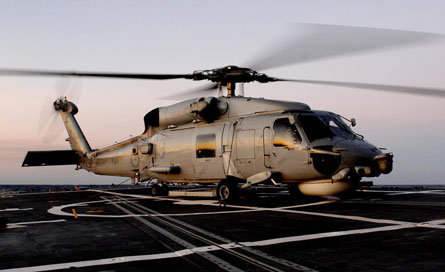The Lockheed Martin/Sikorsky MH-60R and NH Industries NH90 remain as potential replacements for the Royal Australian Navy's Sikorsky S-70B-2 Seahawks and cancelled Kaman Aerospace SH-2G(A) Super Seasprites, the nation's Department of Defence says.
The DoD's confirmation counters recent local media reports that suggested Australian Defence Force (ADF) chiefs have already recommended the MH-60R as the best candidate for the Project Air 9000 Phase 8 deal.
Canberra intends to order at least 24 new naval combat helicopters, enabling the navy to provide eight or more aircraft concurrently embarked on ships at sea.
 |
|---|
© Australian Department of Defence |
Australia's navy needs to replace its 16 S-70B-2 Seahawks |
The selected type will be fitted with anti-submarine warfare capabilities and air-to-surface missiles for anti-ship tasks. It will replace the navy's 16 Seahawks, and its cancelled Super Seasprite project, which was ditched early last year after falling seven years behind schedule and almost 50% over budget.
The DoD says a decision on a new helicopter will take into account "all relevant considerations, including capability, cost, interoperability with other ADF capabilities, risk and value for money".
So-called first pass approval for the acquisition is scheduled during the financial year 2009-10 to 2010-11, with a decision to follow in 2010-11 to 2011-12. Initial operational capability is sought between 2014 and 2016.
While the more mature MH-60R would offer commonality with the US Navy and cost less than its competitor, the naval version of the NH90 offers more capacity in some roles. The latter would also feature 80% commonality in airframe and avionics with the MRH90 transport entering service with the Australian army and navy.
Lockheed and Sikorsky are proposing a A$1 billion ($892 million) package for Australian industry if Canberra orders the MH-60R, and are offering deliveries from late 2011. NH90 majority partner Eurocopter already has a substantial presence in Australia through its Brisbane-based subsidiary Australian Aerospace.
Lead image © Australian Department of Defence
Source: Flight International
















